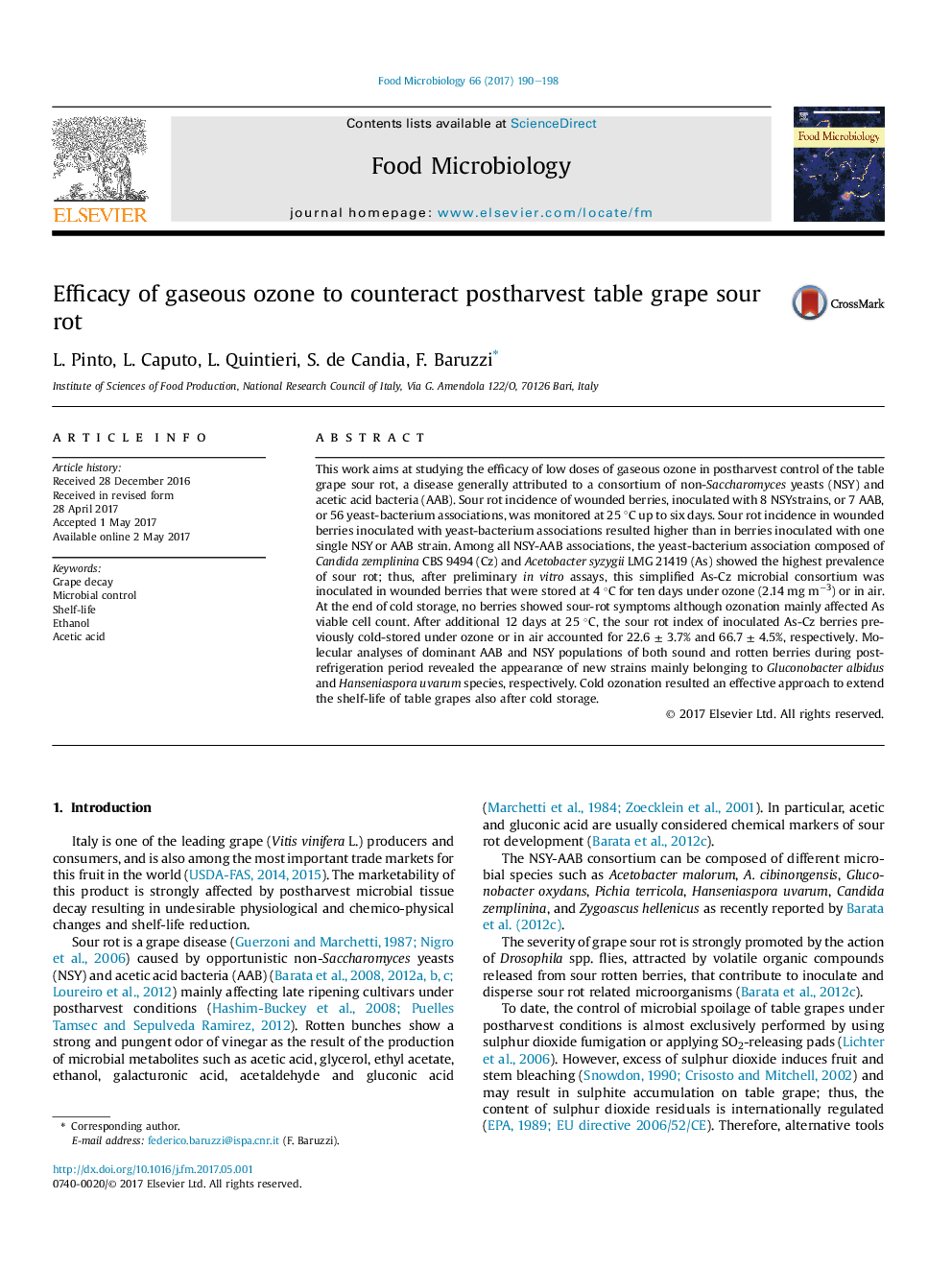| Article ID | Journal | Published Year | Pages | File Type |
|---|---|---|---|---|
| 5740045 | Food Microbiology | 2017 | 9 Pages |
â¢Development of table grape sour rot is specific for different AAB-NSY associations.â¢A. syzygii LMG 21419 and C. zemplinina CBS 9494 constituted a simplified microbial consortium.â¢Cold ozonation at 2.14 mg mâ3 reduced significantly the LMG 21419 viability.â¢Cold ozonation delayed sour rot development also in post-refrigeration period.
This work aims at studying the efficacy of low doses of gaseous ozone in postharvest control of the table grape sour rot, a disease generally attributed to a consortium of non-Saccharomyces yeasts (NSY) and acetic acid bacteria (AAB). Sour rot incidence of wounded berries, inoculated with 8 NSYstrains, or 7 AAB, or 56 yeast-bacterium associations, was monitored at 25 °C up to six days. Sour rot incidence in wounded berries inoculated with yeast-bacterium associations resulted higher than in berries inoculated with one single NSY or AAB strain. Among all NSY-AAB associations, the yeast-bacterium association composed of Candida zemplinina CBS 9494 (Cz) and Acetobacter syzygii LMG 21419 (As) showed the highest prevalence of sour rot; thus, after preliminary in vitro assays, this simplified As-Cz microbial consortium was inoculated in wounded berries that were stored at 4 °C for ten days under ozone (2.14 mg mâ3) or in air. At the end of cold storage, no berries showed sour-rot symptoms although ozonation mainly affected As viable cell count. After additional 12 days at 25 °C, the sour rot index of inoculated As-Cz berries previously cold-stored under ozone or in air accounted for 22.6 ± 3.7% and 66.7 ± 4.5%, respectively. Molecular analyses of dominant AAB and NSY populations of both sound and rotten berries during post-refrigeration period revealed the appearance of new strains mainly belonging to Gluconobacter albidus and Hanseniaspora uvarum species, respectively. Cold ozonation resulted an effective approach to extend the shelf-life of table grapes also after cold storage.
